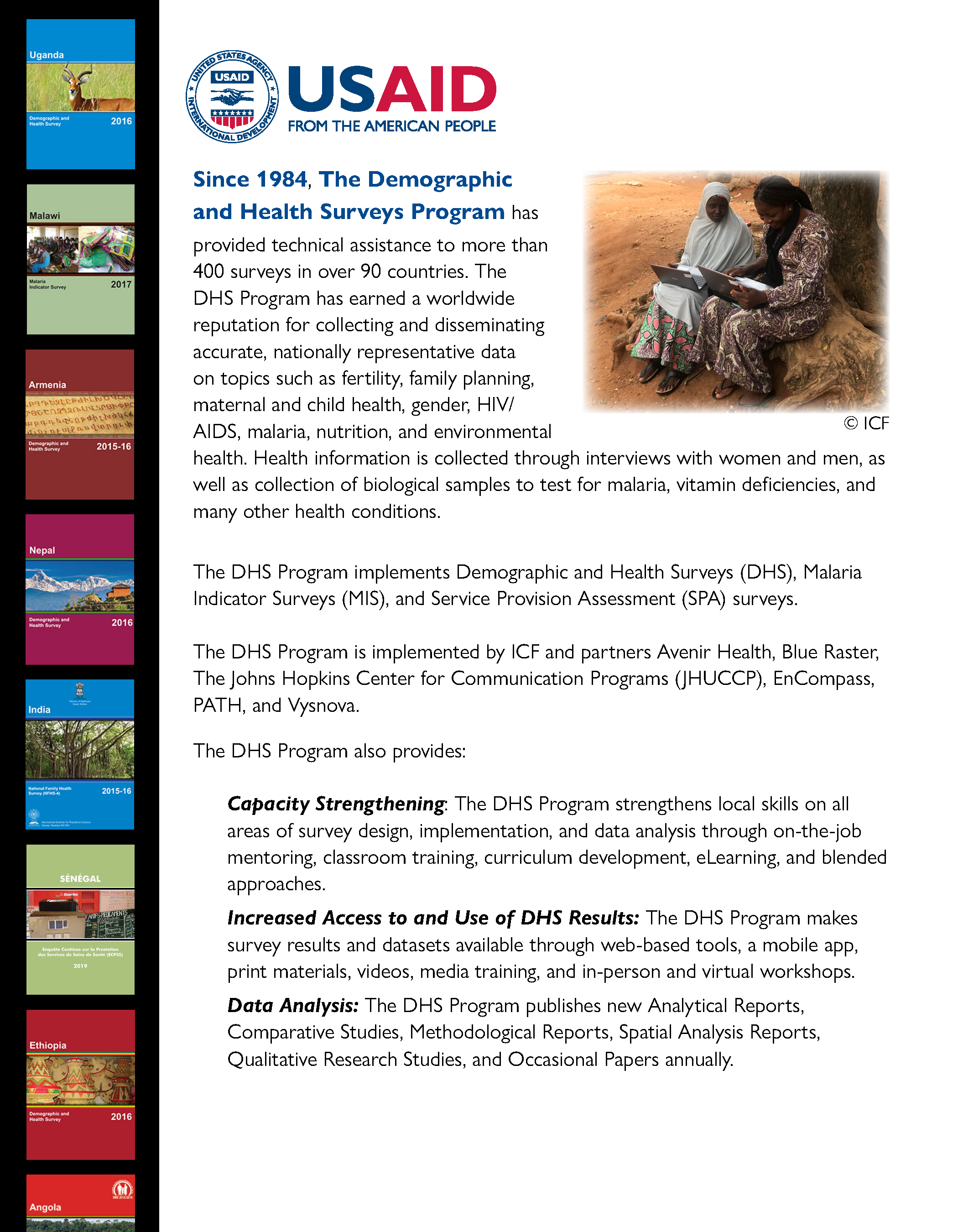Press Releases
Six percent of adults in Uganda are infected with HIV
Calverton, MD. According to the newly released Uganda HIV/AIDS Sero-Behavioural Survey (UHSBS), approximately 6 percent of men and women age 15-49 in Uganda are infected with HIV, the virus that causes AIDS. This rate is similar to other reported national estimates of HIV infection. However, the prevalence of another preventable sexually transmitted infection, herpes simplex 2 (HVS-2), is much higher -- 44 percent among the population tested. In addition, 10 percent of a sub-sample of respondents is infected with another sexually transmitted infection, hepatitis B.
The pattern of HIV prevalence in Uganda is similar to other sub Saharan African countries. Women are more likely to be infected than men. In Uganda 8 percent of women age 15 to 49 carry the virus compared to only 5 percent of men. Urban residents are almost twice as likely to be HIV positive as their rural counterparts. Just over 10 percent of men and women living in cities are infected compared with just under 6 percent of rural residents. For both sexes, rates of infection rise with age, peaking at 12 percent among women in their early 30s and 9 percent among men age 35-44. And, for both men and women, infection rates increase with income. The wealthiest 20 percent of the population is most likely to be infected with the virus.
Almost 8,000 children under age 5 were also tested for HIV infection in the Uganda survey. A tiny fraction, less than one percent, of children carry the virus. Virtually all of the infected children were born to mothers who were themselves infected with HIV.
The most troublesome finding of the UHSBS is the high prevalence of herpes simplex 2 (HSV-2) or genital herpes, infecting 44 percent of Ugandan adults aged 15-49. Almost half (49 percent) of Ugandan women carry HSV-2, which can cause potentially fatal infections in newborns. For both sexes, HSV-2 infection rates increase with age, affecting well over 60 percent of men and women over age 50. Herpes infections can cause painful genital sores which can increase the risk of transmitting and contracting HIV infection.
The UHSBS found high rates of another sexually transmitted infection, hepatitis B, a potentially fatal disease of the liver. Testing for hepatitis B was carried out in a random sample of adults, one-third of the survey respondents. One in 10 men and women carry the virus. There are few differences in infection rates between men and women or among different age groups. Hepatitis B can lead to scarring of the liver (cirrhosis), liver cancer, and death.
Far fewer Ugandans, only 3 percent of adults age 15-49 are infected with syphilis. Infection rates are considerably high among older adults. About 9 percent of male survey respondents age 45-49 tested positive for syphilis.
The UHSBS survey included HIV testing of over 18,000 adults and 8,000 children under 5 throughout all regions of Uganda. All women and men aged 15-59 who were interviewed were ask to provide a blood sample for subsequent testing for HIV, syphilis, herpes simplex virus 2, and hepatitis B. Data were collected from August 2004 until January 2005. The survey was implemented by the Ministry of Health (MOH) in Uganda. ORC Macro provided technical assistance through the MEASURE DHS project. Financial support was provided by the United States Agency for International Development (USAID), the U.S. President’s Emergency Plan for AIDS Relief, and the Government of Japan through the Japan International Cooperation Agency (JICA).
